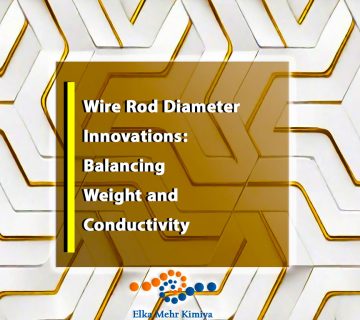Abstract:
This study aims to compare three types of conductors used in overhead transmission lines: Aluminium Conductor Steel Reinforced (ACSR), All Aluminium Alloy Conductors (AAAC), and Aluminium Conductor Composite Core (ACCC). Initially, the paper outlines the construction and technological features of these conductors. Their physical, mechanical, and electrical parameters are compared in a table. The practical section of the paper compares ACSR, AAAC, and ACCC conductors in a 110 kV overhead transmission line tension field, presenting three design solutions using standard calculations.
Introduction:
Replacing traditional ACSR phase conductors with those of a larger cross-section (and thus greater transmission capacity) necessitates the reinforcement or replacement of support structures like towers and insulator chains. Such reconstructions are costly and inefficient. However, replacing existing conductors with new types that have higher current ratings, lower sag at higher temperatures, lighter weight, and lower electrical resistance can effectively and economically increase the transmission capacity of overhead transmission lines (OHTL). Doubling the transmission capacity through reconstruction is significantly cheaper than building new lines with the same capacity. Developing and applying new conductors with superior characteristics has become a challenge for many companies in the electricity transmission sector.
Comparison of ACSR, ACCC, and AAAC Conductors:
Overrating loads on OHTL with steel-core conductors can cause elongation and increased sag, affecting safety clearances. In 2005, CTC Co. (USA) developed a composite core with a high breaking load-to-weight ratio and a low thermal expansion coefficient. Replacing the steel core with a composite one in conductors of the same diameter nearly doubles the transmission capacity, allows for higher working temperatures, and significantly reduces sag. The ACCC/TW design features a composite core made through pultrusion, where unidirectional carbon fibers form a solid core, shielded by E-glass fibers. This design prevents galvanic corrosion and enhances flexibility and toughness. The composite core has a greater cross-sectional area but a smaller diameter, reducing tensile stress compared to steel cores.
Table: Comparison of Conductors
| Mechanical and Electrical Characteristics | ACCC Glasgow | AAAC/TW 300 | ACSR 240/40 |
|---|---|---|---|
| Cross section Al/core (mm²) | 236.7/47.1 | 323.98 | 243/39.5 |
| Total cross section (mm²) | 283.8 | 323.97 | 282.5 |
| Diameter (mm) | 19.53 | 21.7 | 21.9 |
| Mass of conductor (kg/km) | 731.3 | 893 | 987 |
| Weight of conductor (daN/m) | 0.717 | 0.876 | 0.968 |
| Specific weight 10-³ (daN/m,mm²) | 2.526 | 2.704 | 3.426 |
| Specific weight of normal ice load 10-³ (daN/m,mm²) | 2.803 | 2.588 | 2.981 |
| Coefficient of linear expansion 10⁶ (°C-¹) | 17.1 | 23 | 18.9 |
| Modulus of elasticity (daN/mm²) | 6700 | 6800 | 7700 |
| Tensile strength (daN) | 11500 | 9560 | 8640 |
| Normal tension (daN/mm²) | 16.2 | 12 | 13 |
| Tension (daN/mm²) | 30.4 | 22 | 24.5 |
| DC resistance at 20 °C (Ω/km) | 0.1184 | 0.1022 | 0.119 |
| Rated current at 80 °C (A) | 570 | 775 | 530 |
| Rated current at 100 °C (A) | 692 | 951 | 648 |
| Rated current at 180 °C (A) | 1027 | – | – |
| Maximum working temperature (°C) | 180 | 90 | 80 |
| Price (Euro/m) | 10 | 6 | 4 |
Conclusion:
ACCC conductors represent a new technology in electricity transmission, posing serious competition to the widely used ACSR conductors. For similar diameters and cross-sections, ACCC conductors have lower weight and mass, higher tensile strength (due to the composite core), lower linear expansion, lower modulus of elasticity, higher working temperatures, lower electrical resistance, and higher current ratings. AAAC/TW 300 conductors, compared to ACSR 240/40, also have lower weight and mass, higher tensile strength, lower electrical resistance, and higher current ratings, with a maximum working temperature of 90 °C. Replacing ACSR 240/40 conductors with ACCC/TW Glasgow or AAAC/TW 300 conductors results in significantly lower sag and stress across all temperatures, reduced tower loading, higher current ratings at higher temperatures, and lower electrical resistance, leading to decreased transmission losses. Although ACCC/TW conductors are more expensive, technological advancements are expected to reduce their cost, making them more competitive. Meanwhile, AAAC conductors are a viable alternative for ongoing OHTL reconstruction projects aimed at increasing transmission capacity. MEPSO (Macedonian Transmission System Operator) is currently implementing AAAC/TW 300 conductors in several 110 kV OHTL reconstruction and network revitalization projects.
References:
- Atanasovski, M., Arapinoski, B., Kostov, M., & Trpezanovski, L. (2019). Comparison of ACSR, ACCC and AAAC Conductors for Overhead Transmission Lines. Presented at ICEST 2019, Ohrid, North Macedonia, 27-29 June 2019. Available in the uploaded file “ICEST_2019-Atanasovski.pdf”.
- Technical Normative Regulation for 1 kV to 400 kV OHTL Construction in Republic of Macedonia, 1988 (2018).
- Lj. Tpezanovski, A. Markoski, & M. Atanasovski. “Composite Core Conductors for Transmission and Distribution of Electricity with Overhead Lines”, Horizons-Journal of St. Kliment Ohridski University. No. 1, pp. 31-40. Bitola, December 2008.
- Cohen Independent Research Group, Composite Technology Corporation. Report for Investment Recommendation, San Rafael CA, November 2004. Composite Technology Corporation. IEC Specification Sheets for ACCC Conductors., San Rafael CA, 26.4.2012, www.ctcglobal.com.
- Risto Ackoski: Overhead and Cable Power Lines, Faculty of Electrical Engineering and IT-Cкoпje, 2005.
- Stipe Mikulic, Davor Bajs, & Metodija Atanasovski. “Study for Long Term Development Concepts in Separate Regions of Transmission Network in Republic of Macedonia”, Energy Institute Hrvoje Pozar for MEPSO, Zagreb/Skopje 2017.
- A. Alawar, E.J Bosze, & S. Nutt, “A Composite Core Conductor for Low Sag at High Temperatures”, IEEE Transactions on Power Delivery, vol. 20, no. 3, pp. 2193-2199, 2005.
















No comment